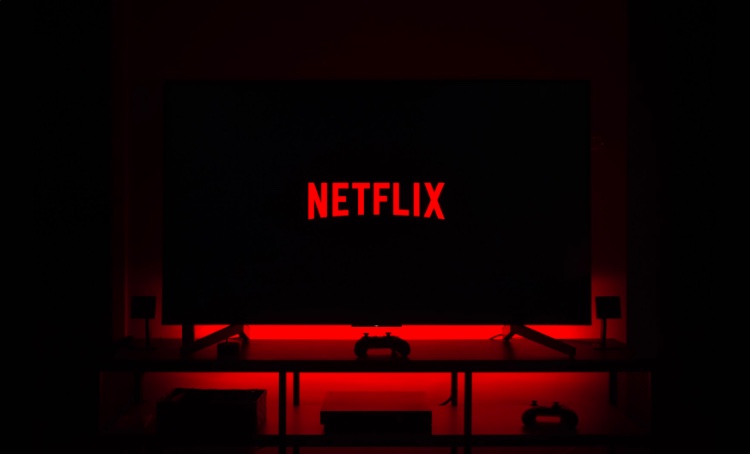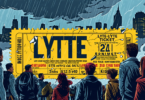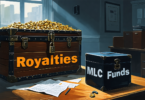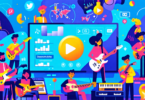Sync licensing is quickly ramping upward, with artists capturing increased revenues. Here’s an overview for artists, composers, advertisers, and everybody in between.
The following was created with the support of Songtradr, part of a broader partnership focused on the sync licensing space.
The past decade has witnessed an absolute explosion in the quantity of video content. What started with YouTube now encompasses big-budget productions on Netflix, Disney Plus, and HBO Go, not to mention a continued stream of games.
Almost all of that requires music, which is where the sync license comes in.
But what is sync licensing, you ask? The answer can be pretty complex, but is ultimately quite simple. It’s a license that enables the matching of your music within a movie, TV show, commercial, video game, or any other form of visual media.
The operative word here is ‘synchronization,’ which refers to the time-perfect matching of video with audio (i.e., music). For those who prefer math, the sync license boils down into the following equation:
Video + audio = sync license, where ‘audio’ = $
That ‘$’ can add up to hundreds, thousands, or millions for songwriters, composers, musicians, or anyone who owns the rights to a piece of music. Deals of every shape and size are being structured and signed as you read this guide.
What sync is — and isn’t.
At its core, a sync deal requires at least two parties: the production company in charge of the visual (i.e., the movie, TV show, or commercial), and the content owner(s) (i.e., the musician, songwriter, publisher, record label or other entity owning the music).
It’s important to note that the sync license is completely different from other music licenses. Spotify, for example, does not require sync licenses to deliver its music streaming service, as it does not match music to visual content. Similarly, venues, malls, and elevators are also not signing sync deals, since their music is considered a ‘performance’ (the same goes for various forms of radio).
Also, any sale of an LP, CD, or other physical format has nothing to do with sync licensing.
Sync: an equal opportunity license!
In many cases, sync deals involve a major Hollywood studio and a massive artist. The musician making money could be anyone from Coldplay to Billie Eilish, and the licensing fees can be gargantuan.
“the music simply has to fit — it doesn’t need to be a hit!”
But sync also offers significant opportunities for independent artists, songwriters, and composers. The reason is that the music simply has to fit — it doesn’t need to be a hit. A chase scene might need a rapidly-moving drumming sequence with intense instrumentals; a rom-com could use something with a light-hearted guitar and a breathy singer.And in the case of the latter, that breathy singer could easily catch fire if the film (or TV series) is popular enough. Even crazier, major advertisers often break earlier-stage indie artists, simply because their music offers a fresh sound to prospective customers.
So how do you structure a sync deal?
Any artist with ownership over a piece of music can structure a sync deal. There are no steadfast rules on who can make this handshake, though artists are typically entering sync deals via a music publisher or catalog, music supervisor, or sync platform.
A music publisher is a company that works to maximize the value of a piece of music, through a variety of licenses and deals. They typically acquire the rights to a catalog of music, or sign a deal to administer the rights to that music. In each case, they take a sizable fee, but promise greater access to heavyweights at major Hollywood studios, advertising agencies, sports networks, online platforms, and gaming platforms.
A music supervisor is a specialist in matching music with visual media. They’re frequently hired or employed by a studio or production company, with the job of finding the right music for a production. They’re also in charge of ‘clearing the rights,’ which means securing permissions to use music that might fit the film, TV show, or other production.
Recording labels themselves are often involved in sync deals, in coordination with publishers and supervisors. They control one important part of the license, the master (see below).
Both music publishers and supervisors have been structuring sync deals for decades, though sync platforms are now upending some of those cozy relationships. Songtradr, one of the largest online platforms, allows artists and songwriters to upload music that might fit a variety of different productions. In turn, that music is categorized, analyzed, made discoverable, and recommended to various music supervisors and content producers, who can structure deals through the Songtradr platform or team and skip the middlemen.
Master vs. Publishing Rights.
Once a song is identified for a possible match, the negotiation process begins. In every sync license case, a song contains two key rights: the master recording license, and the publishing license. The master recording license refers to the actual recording, while the publishing right refers to the underlying composition (the notes and lyrics). Both are required for a successful license, which often means that multiple parties are required to cooperate in order to successfully license a song, especially if there are multiple writers and publishers.
In some cases, one individual or entity (say, a composer or indie artist) owns 100% of both the recording and publishing rights. In this case, the sync is considered “one stop” as it is a much simpler transaction with one price.
It’s worth noting that one stop sync licenses are often viewed favorably by licensees (like studios and production companies), simply because they are far easier, and often more cost-effective, to license.
Traditional vs. Newer Licensing Approaches: Which Is Better?
The answer depends on the situation. If you’re Coldplay, you’re likely to structure a deal with your major label group (which may include a major publishing division) and a major studio on the other end. In fact, there will likely be plenty of lawyers shepherding the deal.
Supervisors also structure a lot of deals, though a platform approach is becoming increasingly popular. In the case of Songtradr, a music buyer can discover and license music from a vast global community of artists, songwriters, and composers and determine creative and rights requirements on platform, and if they need, leverage Songtradr’s team of music curators and specialists. As an example, Rihanna’s team tapped Songtradr to help place music on a spot for Fenty Beauty using both the platform and music team to assist.
Source: Digital Music News







